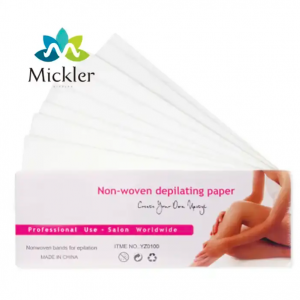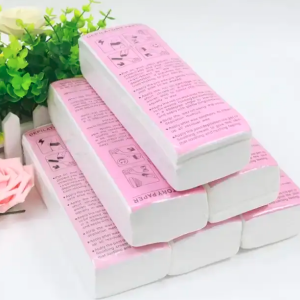Paper has been an integral part of human civilization for centuries, changing the way we communicate, record information and share ideas. However, the paper industry faces numerous challenges in achieving sustainable development and reducing environmental impact. A particularly interesting solution to these challenges is the concept of "hair removal papers". In this blog post, we’ll explore the paper dehairing process and its potential to revolutionize the paper industry.
What are hair removal papers?
Depilatory paper refers to the removal of hair fibers from the pulp prior to the manufacturing process. Traditionally, recycled paper contains various types of fibers, including hair, which are difficult to completely eliminate. By dehairing the paper, these unwanted fibers are removed, leaving a pulp more suitable for producing high-quality recycled paper.
Hair removal process:
Hair removal papers involve several steps to ensure effective removal of hair fibers. First, waste paper is collected from different sources and sorted to separate it from other waste. The collected waste paper is then chopped into small pieces to form pulp.
The pulp goes through a series of treatments including washing, filtering and centrifuging to remove contaminants such as ink, dirt and chemicals. Once the pulp becomes cleaner, it enters the dehairing stage, where a specialized machine with a fine screen or filter captures and strips hair fibers from the pulp. These fibers are then collected individually and used for various purposes, such as creating compost or biofuel.
Advantages of hair removal papers:
1. Improve quality: Depilatory paper improves the overall quality of recycled paper. By eliminating hair fibers, the resulting product becomes smoother, more even and visually appealing. Improved quality makes the paper suitable for a wide range of applications, including printing, packaging and stationery.
2. Enhanced sustainability: The dehairing process significantly increases the recyclability of waste paper. By removing hair fibers, the recycled pulp becomes purer, reducing the need for additional chemicals in the manufacturing process. This saves a lot of energy and reduces environmental impact.
3. Waste utilization: The hair fibers collected during hair removal can be reused, turning waste into valuable resources. Hair fibers can be used in compost as they contain valuable organic matter that enriches the soil. Additionally, these fibers can be processed into biofuels, further reducing waste and reliance on fossil fuels.
4. Cost-effectiveness: Delinting paper can bring economic benefits to paper manufacturers. This process optimizes the quality of recycled paper, reduces waste and lowers production costs. Additionally, utilizing hair fibers as biofuel or compost creates an additional revenue stream for the industry.
in conclusion:
Dematted paper has emerged as a promising solution to improve the quality, sustainability and cost-effectiveness of recycled paper. By implementing this process, the paper industry can significantly reduce waste, energy use and environmental impact. Hair removal papers open up new ways to utilize hair fibers and create a more sustainable and efficient method of paper production.
As demand for sustainable practices continues to increase, delinting paper has huge potential to transform the paper industry by addressing key challenges and promoting a circular economy. Taking this innovative approach not only improves the quality of paper products but also helps create a greener, more sustainable future.
Post time: Oct-31-2023


